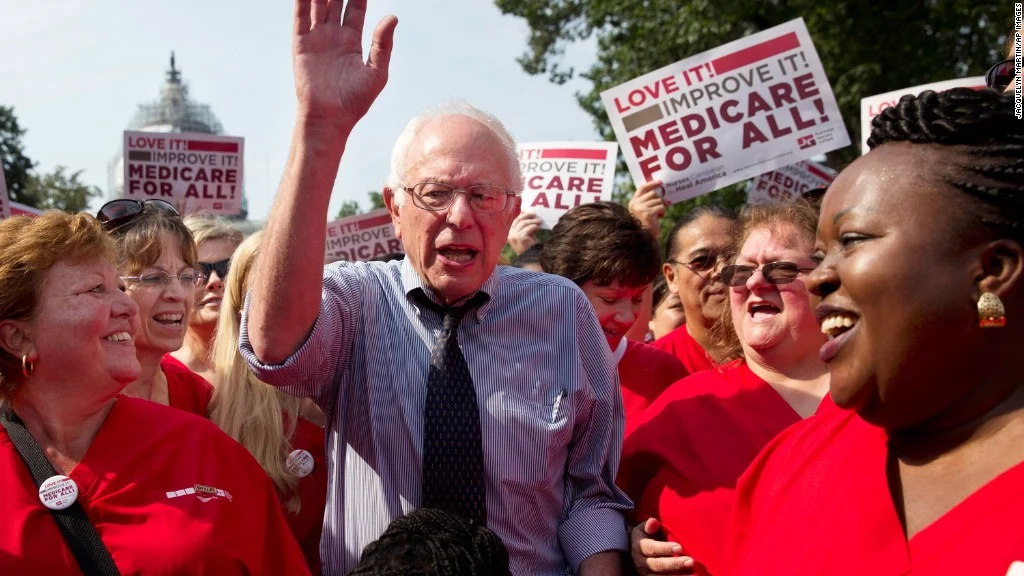Preliminary Analysis of Medicare-for-All By Nicky Riordan
Amid the recent Republican failure to repeal and replace the Affordable Care Act (ACA) earlier this year, political analysts and progressive activists alike began discussing the feasibility of a Democratic push for a Medicare-for-All approach to fixing the healthcare system. That approach, championed over the years by Vermont Senator and former Presidential candidate Bernie Sanders, has now officially been embraced by one-third of Democratic Senators and sixty percent of House Democrats.
Sanders introduced a bill that would move the country to a universal, single-payer system mirroring Medicare and abolish the majority of the current private insurance system. A similar measure by Sanders introduced in 2013 did not attract a single co-sponsor, but the proposal unveiled last week included 16 high-profile co-sponsors such as Kamala Harris, Elizabeth Warren, and Cory Booker. Many of these names have already been floated as Democratic presidential candidates in 2020.
This new proposal is much more robust and bold than past attempts to move toward a single-payer healthcare system in the United States, most likely due to activist energy around the issue and a lack of consensus on the other side of the aisle. Indeed, a June Kaiser Family Foundation Health Tracking poll found that 53 percent of Americans now favor a single-payer system, and public opinion studies show that public support has risen over time.
Enrollment in the system would be automatic at birth or upon immigration to the U.S., simplifying the process to obtain coverage; and the benefit package is consistent with the mandated essential health benefits outlined in the ACA. Additionally, the bill prohibits cost-sharing of any kind for consumers, including the charging of deductibles, coinsurance, and copays; however, individuals would be responsible for the cost of prescription drugs capped at $200 annually.
Most notably, like with Medicare, the Department of Health and Human Services would be responsible under this law to negotiate prices for prescription drugs, devices, and equipment - an often contested element of government-run plans that proponents argue reduces costs in the long term. The bill also includes detailed implementation information based on the current healthcare system, including a transitional version of the public option for those in the marketplace.
Following the introduction of the bill, Sanders released a white paper that laid out financing options for the proposal - details that were noticeably absent from the public roll-out. The details include unpopular ideas such as tax increases on employers and the public, but leans more heavily on raising taxes on the wealthy through estate tax reform and a more progressive tax structure targeting financial institutions. These proposals come as no surprise and fall clearly in line with Sanders’ 2016 populist approach to addressing income inequality more broadly.
Sanders and his Democratic supporters are under no illusion that the bill will pass under the current Congress, but it seems to be playing a role in the priming of candidates for a 2020 run. In the political vacuum created by the failure to repeal the ACA, lawmakers on both sides of the aisle are beginning to position themselves within clear camps: those who still wish for a clean repeal, those who see the need for a bipartisan compromise fix to the ACA, and those on the left who want to use this opportunity to finally push for the end goal they have always envisioned.
In the coming months, it will be important to keep an eye on public support for the policy and the division it causes within Democratic lawmakers, as this will likely signal the path forward for Democrats if they are able to regain power in 2018 or 2020.
Nicky Riordan (@nriordan120), Political Analyst, Utica College Center of Public Affairs and Election Research





